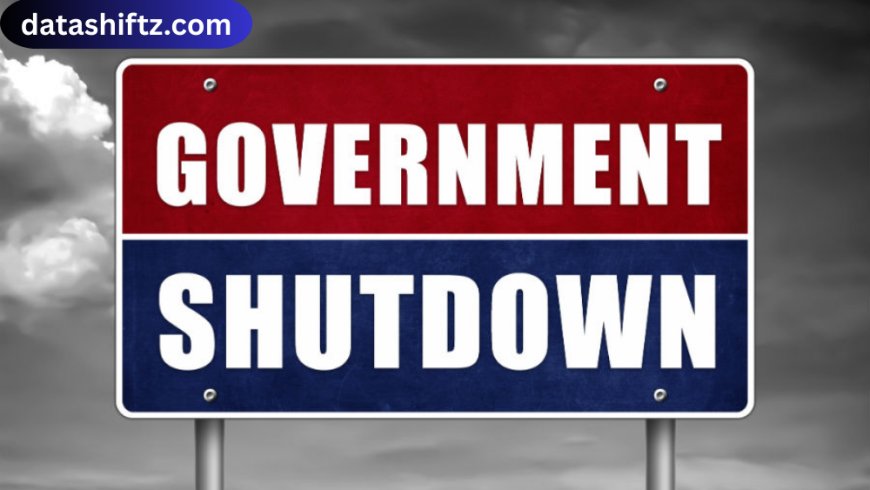Senate Government Shutdown: Causes, Impacts, and Solutions

Introduction
In the United States, the term “government shutdown” is one that sparks immediate concern across the nation. At the heart of this recurring issue lies the U.S. Senate, one of the most critical bodies in the legislative process. A Senate government shutdown happens when lawmakers fail to pass the necessary funding bills, leading to a halt of many federal operations. From federal employees missing paychecks to delays in essential services, shutdowns have widespread effects. This article explores the history, causes, consequences, and possible solutions to the recurring issue of Senate-led government shutdowns.
What is a Senate Government Shutdown?
A government shutdown occurs when Congress, particularly the Senate and House of Representatives, cannot agree on a budget or a continuing resolution to fund federal agencies. The Senate plays a key role because it must pass spending bills alongside the House, and any disagreement between the two chambers — or with the President — can result in a funding lapse.
When a shutdown happens, “non-essential” federal services are temporarily suspended, while “essential” services, such as military operations and air traffic control, continue to function but often without pay for workers until funding is restored.
Causes of a Senate Government Shutdown
1. Partisan Gridlock
The most common cause is partisan disagreements. When senators from opposing political parties refuse to compromise on spending priorities, it can stall the budget process.
2. Policy Disputes
Shutdowns often occur when budget bills include controversial policy measures such as immigration reform, healthcare funding, or climate-related initiatives.
3. Debt Ceiling Conflicts
While related but slightly different, disputes about raising the federal debt ceiling often overlap with shutdown threats. The Senate plays a key role in these negotiations.
4. Short-Term Funding Reliance
Instead of passing long-term budgets, the Senate sometimes approves temporary funding bills called continuing resolutions. When these expire without a new agreement, shutdowns occur.
Historical Examples of Senate Government Shutdowns
| Year | Duration | Main Issue | Senate’s Role | Impact |
|---|---|---|---|---|
| 1995-1996 | 21 days | Dispute over spending cuts | Senate gridlock on budget priorities | Longest shutdown at the time |
| 2013 | 16 days | Affordable Care Act (Obamacare) funding | Senate refusal to adopt House proposals | 800,000 workers furloughed |
| 2018-2019 | 35 days | Border wall funding | Senate deadlock with President Trump | Longest shutdown in U.S. history |
| 2021 (averted) | N/A | Debt ceiling and COVID-19 relief | Senate negotiated last-minute deal | Shutdown prevented |
These examples highlight how Senate disagreements have been central to some of the most significant shutdowns in U.S. history.
Impacts of a Senate Government Shutdown
Economic Effects
-
Federal workers are furloughed without pay.
-
Consumer confidence drops, reducing economic activity.
-
GDP growth slows depending on the length of the shutdown.
Political Effects
-
Public trust in government declines.
-
Lawmakers face political backlash from voters.
-
Senate leadership is often blamed for failure to negotiate.
Social Effects
-
National parks and museums close, affecting tourism.
-
Delays in federal loans and benefits impact families.
-
Research and education funding projects may stall.
List of Key Consequences of Senate Shutdowns
-
Federal Employees Furloughed: Millions of government workers go without paychecks.
-
Delayed Services: Passport and visa processing slows down.
-
Closed Agencies: Many non-essential federal offices shut their doors.
-
Economic Losses: Billions of dollars lost during prolonged shutdowns.
-
Stock Market Volatility: Uncertainty rattles investors.
-
Political Fallout: Senators face criticism for partisanship.
-
Public Inconvenience: Travel, education, and health services are disrupted.
-
National Security Risks: Intelligence and defense may face reduced staffing.
-
Charitable Strain: Nonprofits step in to support unpaid workers.
-
Global Impact: Allies and partners lose confidence in U.S. stability.
Possible Solutions to Prevent Senate Shutdowns
Bipartisan Negotiations
Encouraging senators from both parties to work together early in the budget process reduces last-minute conflicts.
Automatic Continuing Resolutions
Some experts propose laws that automatically continue funding at current levels if the Senate fails to pass a budget on time, avoiding shutdowns.
Clearer Budget Deadlines
Enforcing stricter timelines for budget approval could prevent procrastination and rushed negotiations.
Public Accountability
Making Senate proceedings more transparent could push lawmakers to prioritize national interest over party politics.
The Role of the Senate in Future Shutdowns
The Senate remains a critical player in preventing or causing shutdowns. While the House often initiates spending bills, the Senate has the power to amend, delay, or reject them. With increasing political polarization, shutdown threats may continue unless systemic reforms are made. However, the Senate also has the unique ability to foster bipartisan cooperation and find middle ground, making it both part of the problem and the potential solution.
Conclusion
A Senate government shutdown is more than just a political standoff — it is a national crisis that disrupts millions of lives. From unpaid federal workers to stalled economic activity, the consequences are far-reaching. While partisan battles and policy disputes are inevitable in a democratic system, the Senate has the responsibility to prioritize governance over gridlock.
Looking forward, adopting reforms such as automatic funding measures, bipartisan dialogue, and greater accountability could reduce the likelihood of shutdowns. The lesson is clear: when the Senate fails to act, the nation suffers. It is up to lawmakers to ensure that government shutdowns become a relic of the past rather than a recurring reality.






























